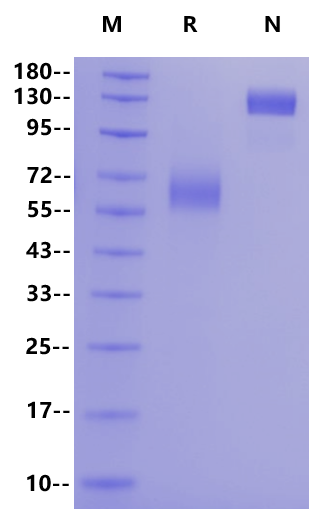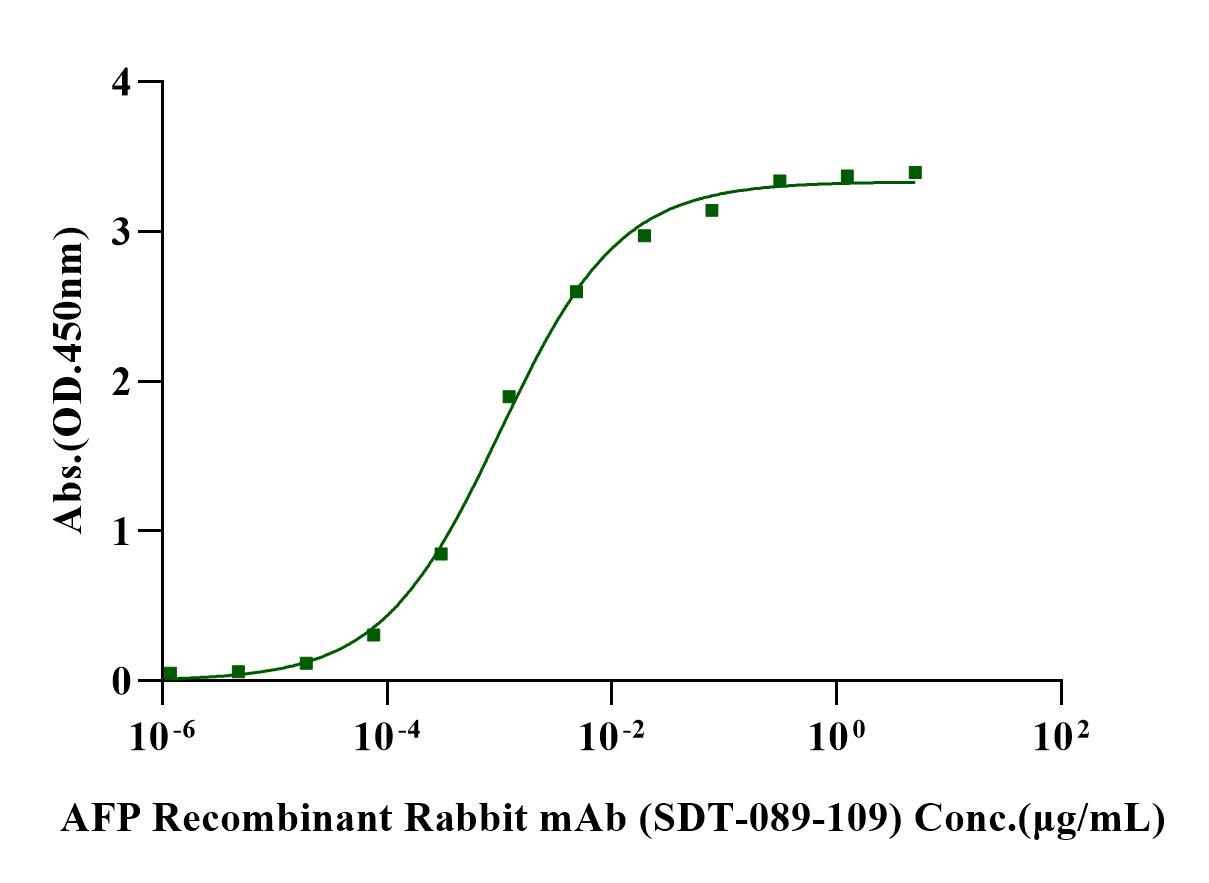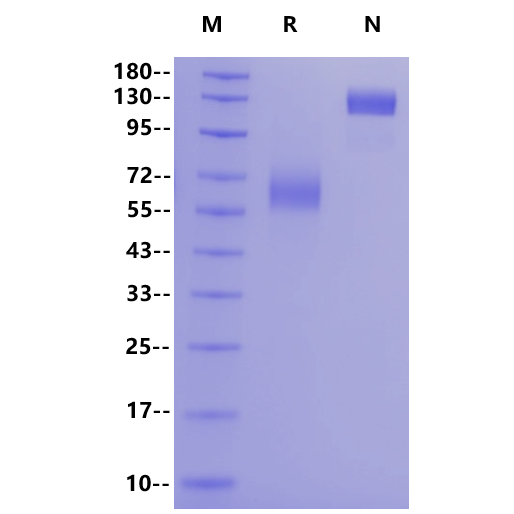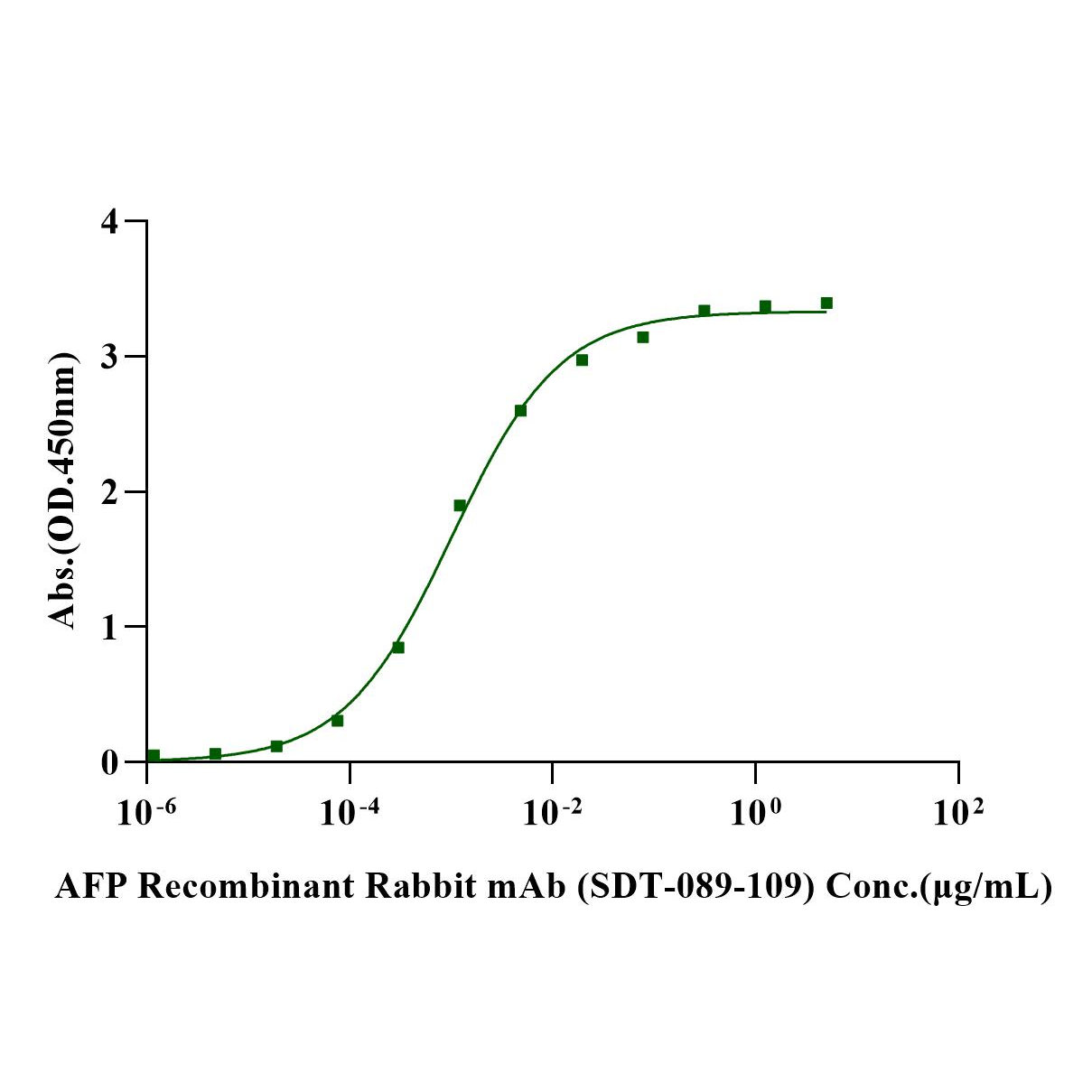Product Details
Product Details
Product Specification
| Species | Mouse |
| Synonyms | TIMD3, HAVCR2, FLJ14428, KIM3 |
| Accession | Q8VIM0 |
| Amino Acid Sequence | Leu22-Arg191, with hIgG1 Fc |
| Expression System | HEK293 |
| Molecular Weight | 55-72kDa |
| Purity | >95% by SDS-PAGE |
| Endotoxin | <0.1EU/μg |
| Conjugation | Unconjugated |
| Tag | Human Fc Tag |
| Physical Appearance | Lyophilized Powder |
| Storage Buffer | PBS, pH7.4 |
| Reconstitution | Reconstitute at 0.1-1 mg/ml according to the size in ultrapure water after rapid centrifugation. |
| Stability & Storage |
· 12 months from date of receipt, lyophilized powder stored at -20 to -80℃. · 3 months, -20 to -80℃ under sterile conditions after reconstitution. · 1 week, 2 to 8℃ under sterile conditions after reconstitution. · Please avoid repeated freeze-thaw cycles. |
| Reference |
1、Geng H. et al. (2006) Soluble form of T cell Ig mucin 3 is an inhibitory molecule in T cell-mediated immune response. J Immunol. 176(3): 1411-1420. 2、Anderson A C. et al. (2006) TIM-3 in autoimmunity. Curr Opin Immunol. 18(6): 665-669. 3、Anderson DE. (2007) TIM-3 as a therapeutic target in human inflammatory diseases. Expert Opin Ther Targets. 11(8): 1005-1009. 4、Pan H F. et al. (2010) TIM-3 as a new therapeutic target in systemic lupus erythematosus. Mol Biol Rep. 37(1): 395-398. |
Background
TIM-3 (T cell immunoglobulin and mucin domain-3), also known as HAVCR2, is a 60 kDa member of the TIM family of immune regulating molecules. TIMs are type I transmembrane glycoproteins with one Ig-like V-type domain and a Ser/Thr-rich mucin stalk region. Mature mouse TIM-3 consists of a 174 amino acid (aa) extracellular domain (ECD), a 21 aa transmembrane segment, and a 67 aa cytoplasmic tail. Within the ECD, mouse TIM-3 shares 58% and 75% aa sequence identity with human and rat TIM-3, respectively. Recently, the identification of Galectin-9 as a ligand for TIM-3 has established the TIM-3-Galectin-9 pathway as an important regulator of Th1 immunity and tolerance induction. Engagement of Tim-3 by its ligand galectin-9 negatively regulates IFN-gamma secretion and influences the ability to induce T cell tolerance in both mice and man. The TIM-3-galectin-9 pathway could underlie chronic autoimmune disease states, such as multiple sclerosis. Numerous studies have demonstrated that Tim-3 influences autoimmune diseases, including diabetes and multiple sclerosis, and its role in other inflammatory diseases including allergies and cancer is beginning to become clear. In the tumor rejection model, the soluble form of Tim-3 (sTim-3) significantly impaired T cell antitumor immunity, evidenced by decreased antitumor CTL activity and reduced amount of tumor-infiltrating lymphocytes in the tumor.
Picture
Picture
SDS-PAGE

ELISA

Immobilized TIM-3/HAVCR2 Fc Chimera Protein, Mouse (Cat. No. UA010231) at 2.0μg/mL (100μL/well) can bind Invivo Anti-Mouse CD366 (TIM-3) Recombinant mAb (Cat. No. S0B1073) with EC50 of 12.15-17.14ng/ mL.




